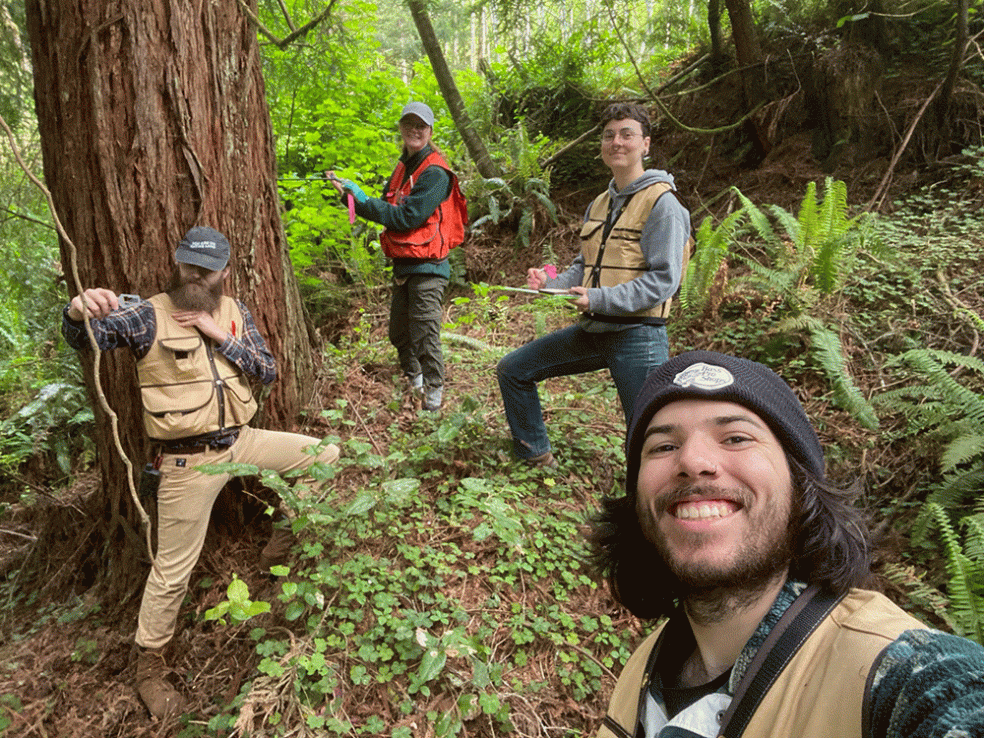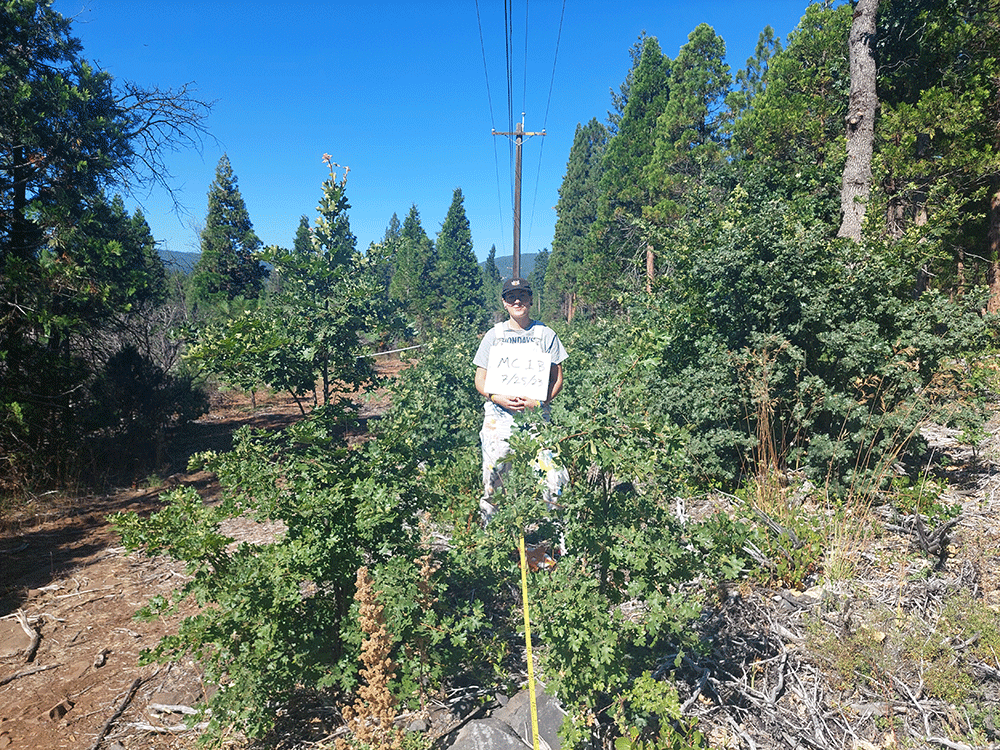
The research team, which includes two graduate and five undergraduate students, received $497,000 from PG&E for their study.
Geography Professor Rosemary Sherriff, Forestry Professor Lucy Kerhoulas (‘06, Botany, ‘08, MS Biological Sciences), Environmental Science & Management Professor Kerry Byrne, and Forestry Instructor Sara Hanna are leading the project.
Kerhoulas says that the research was motivated by PG&E’s concern with frequent power outages due to fallen trees, and associated fire risk, in rural Northern California.
“Through this project we are forging a strong and productive relationship with PG&E and we aim to help the company better provide reliable power to rural areas in the region while also reducing fire risks in these communities,” Kerhoulas says.
The project, which started this summer, investigates tree health in human-made surroundings such as powerlines, roads, or buildings, and unbuilt or natural environments in forests in five counties: Humboldt, Lake, Mendocino, Shasta, and Trinity.
The data the researchers collect will help them understand tree health, the environmental conditions associated with their health, and their potential to fall and damage infrastructure.
To assess tree health, researchers are identifying dead or damaged trees, such as those with root, stem, and branch breakage, signs of disease, or fire damage. They are also collecting information about the tree’s location, height, soil moisture and type, groundcover, and nearby competition.

Additionally, researchers are monitoring understory (underlying layer of vegetation under tree canopies) microclimates using data loggers, which measure temperature and humidity, every three hours. This combined information will help identify areas that are fire prone due to high fuel loads coupled with dry conditions.
The study will help close several research gaps, says David Dorval, Natural Resources graduate student. “Existing research is unable to conclusively link independent site-level or tree-level factors to likelihood of tree failure, especially in the ecoregions and forest types we are studying,” he says. “Current research is also unclear on how to quantify tree health as a means to predict tree failure in the forest setting.”
Ultimately, results will give land managers, including PG&E, information to direct vegetation management efforts to areas vulnerable to tree failure and wildfire in rural areas of Northern California.
The most exciting part of being involved in this study, says Damian Giles, a junior Forestry major and project manager for the study, is its potential impact.
“We've seen too many wildfires across the continent caused by tree failure near powerlines or other power infrastructure,” Giles says. “With more information about tree health, we can minimize those fires. More information leads to better vegetation management plans and safer communities.”